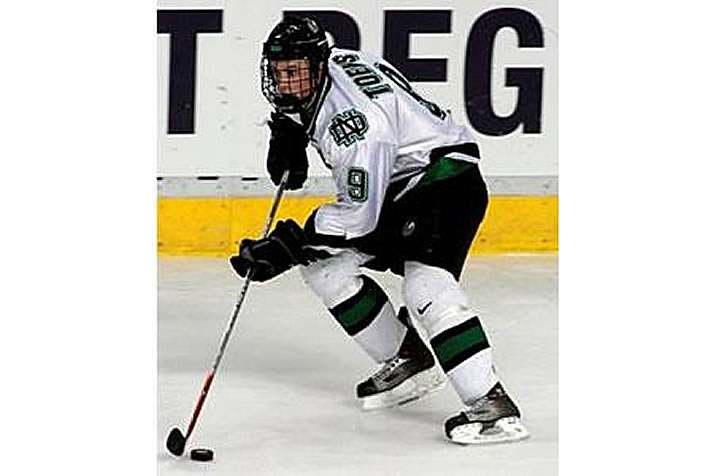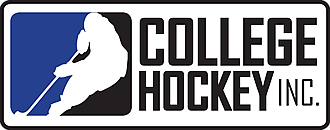Thursday, February 10, 2011
A Battle Across the Border in Recruiting

By ANDREW PODNIEKS – New York Times
Patrick McCarron, 16, is a defenseman with the St. Michael’s Buzzers in Toronto, a team owned by his father that plays in provincial Junior A hockey. Last summer, McCarron was drafted by the Oshawa Generals of the Ontario Hockey League. The Generals put a contract in front of him, but he would not sign it.
“I told them I didn’t want to sign yet because I’d lose my N.C.A.A. eligibility,” McCarron said, “and I was seriously considering going the college route.”
In the eyes of the N.C.A.A., playing major junior hockey in Canada is considered professional, and increasingly young Canadian players are weighing their options.
The number of Americans playing in Canada’s major junior leagues has been growing for years, and American colleges are increasingly fighting back by recruiting Canadian players.
According to Paul Kelly, executive director of College Hockey Inc., there were 67 American players in Canada’s junior leagues six years ago. Now, he said, there are 131.
“As a result, there was a feeling among college coaches that the N.C.A.A. product had become diluted,” Kelly said, adding that that was why College Hockey hired him. He works for the six conferences that comprise N.C.A.A. Division I hockey in an effort to counter the Canadian Hockey League’s encroachment on American talent.
The C.H.L. is an umbrella organization for three Canadian leagues: the Western Hockey League, the Ontario Hockey League and the Quebec Major Junior Hockey League. The C.H.L. has developed more pro hockey players than any other organization in the world, primarily for the N.H.L.
“My objective is twofold: to stem the flow of players leaving for the C.H.L. and to attract elite Canadians to college hockey,” said Kelly, a former chief of the N.H.L. players union.
Kelly’s job is complicated by the C.H.L.’s history and tradition ? and the allure of being the most successful route to the N.H.L.
“We are the No. 1 development league in the world,” C.H.L. Commissioner David Branch said in a telephone interview from Toronto. “We offer the best coaching, most advanced technology, finest facilities, most competitive environment, academic advisers and every aspect of nutrition, psychology and antidoping.”
Kelly acknowledges the traditional role of junior hockey in Canada. “But times change,” he said. “There are other options now. Recruiting from both sides of the border has ramped up significantly because we are both trying to attract the same pool of elite players. You have about 60 teams in the C.H.L. and 60 teams in Division I, and they all want the best players. There is unavoidable tension.
“All we can do is explain all options to a kid and tell him not to give up eligibility too soon. For some players, the C.H.L. is absolutely the way to go, but for many others, if you can get an education and play hockey, college is the better route.”
Kelly’s best example might be the Chicago Blackhawks’ captain, Jonathan Toews, who is from Winnipeg, Manitoba, but who chose to play at North Dakota for two seasons before being selected third over all in the 2006 N.H.L. draft.
Kelly points out that only 6 percent of players in the college and major junior ranks will ever play in the N.H.L.
“These are daunting odds,” he said. “If I’m in a room with 100 people and I tell a kid that only six will make it, he’ll say he’s one of them, and he doesn’t care who the other five are. At 16, every kid thinks he’ll play in the N.H.L.”
On one hand, Kelly is offering an education as well as a hockey experience. On the other, he is challenging a tradition of getting to the N.H.L. as old as the N.H.L. itself.
Ultimately, McCarron went the college route.
“For me, N.C.A.A. is going to be the best choice,” he said. “I’ll come out of college with a degree, and if I want to take a run at the N.H.L., I can. If it doesn’t work out, I still have that piece of paper in my hand and can get a job.”
Kelly held what he called a summit in Toronto last September, the first in Canada, with 25 college coaches there to scout and answer questions. He said 71 players from the Greater Toronto Hockey League attended, McCarron being one of them. He called it “a real eye-opener.”
“A lot of the kids had no idea that college was an option,” he said. “For them, it’s all O.H.L., O.H.L., O.H.L., but they don’t know that 30 percent of players in the N.H.L. went to college.”
That number reflects Canadians and Americans. Of 1,568 Division I players this year, 481 are Canadian.
Branch, though, promoted the education package offered players in the Canadian junior leagues, including a full scholarship for four years at a Canadian college for players who decide not to turn pro. Players in the C.H.L. earn a minimum of $335 a week and receive meal money.
“We feel our education package is not only the best in North America but probably the world,” Branch said.
The recruiting battle for players has not been universally welcomed.
Bob Nicholson, president of Hockey Canada, which oversees every aspect of hockey in the country, from grass-roots development to the selection of Olympics rosters, said that he supported Kelly’s efforts and that the two have a respectful relationship, but, he added, “What I would like to see is for college hockey to stay out of Canada and for C.H.L. teams to stay out of the U.S.”
Nicholson has just sent a recruiting protocol agreement to USA Hockey in the hope of defining the process better, although he admitted that was probably unenforceable.
